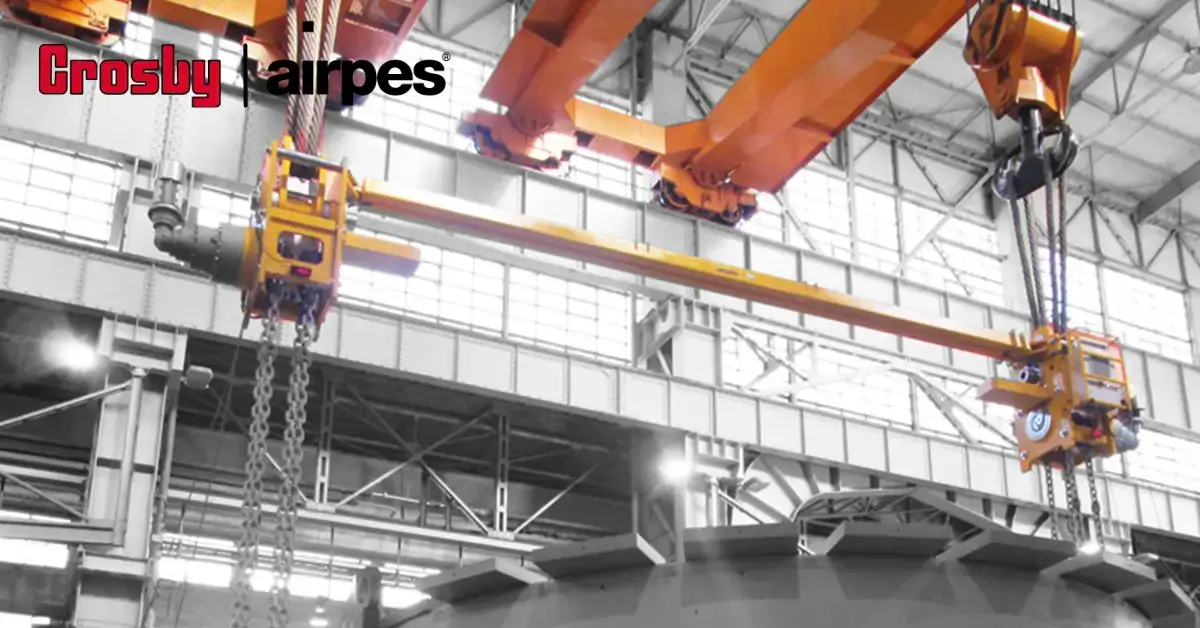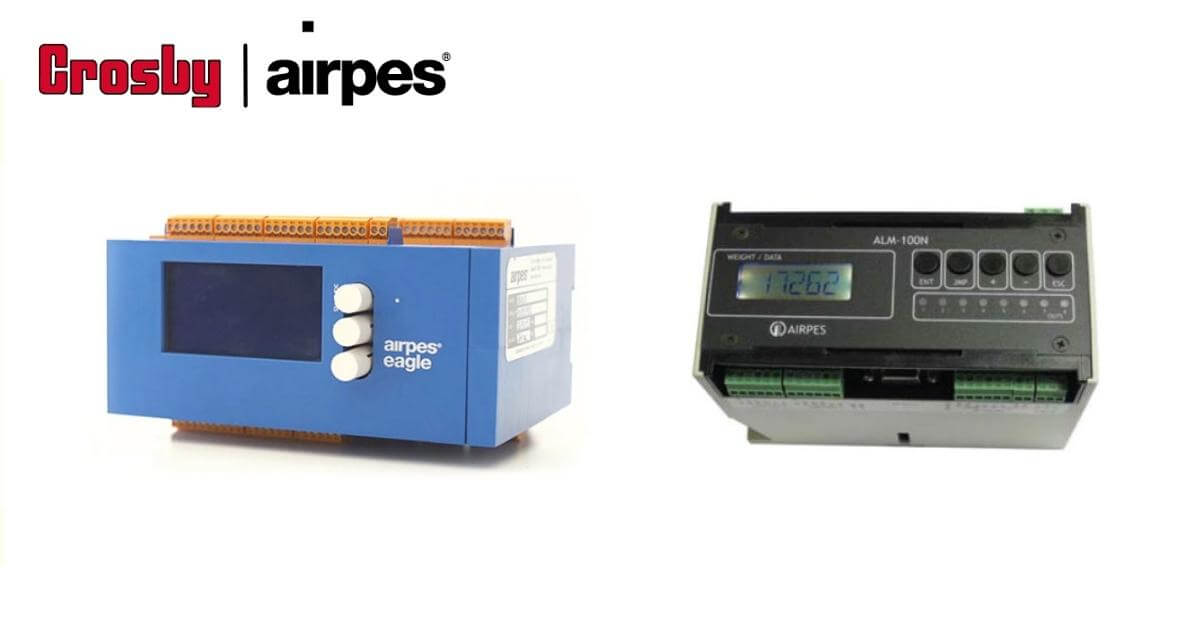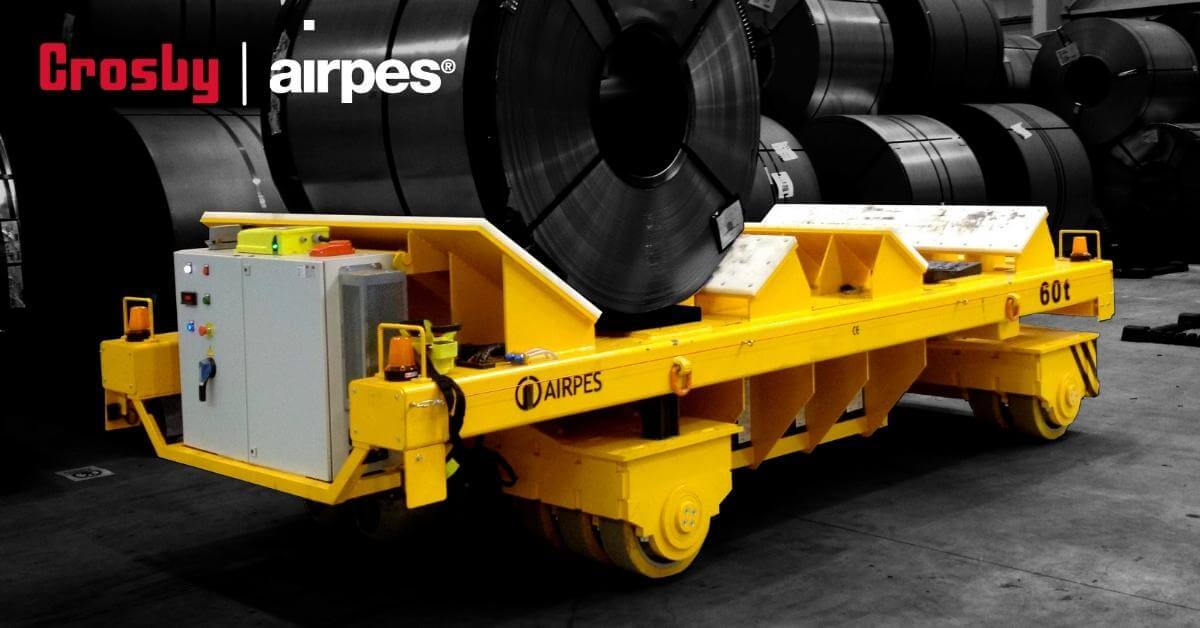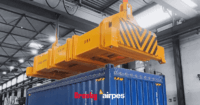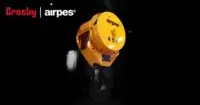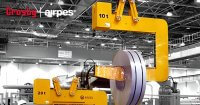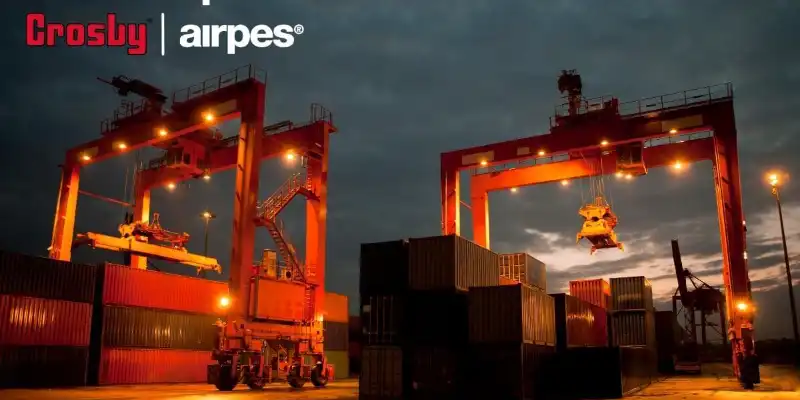
One Overhead Crane after being adjusted with new overhead crane parts from Airpes
Crane parts and lifting equipment are critical in many industries. Key components of any overhead crane include the overhead crane hoist parts, runway(s), control and safety systems and more. For detailed instructions, our guides can help you understand each component better, especially in automated crane systems.
Also there are overhead crane equipments and end parts specific to other types of cranes such as jib cranes and gantry cranes. In addition, in advanced lifting installations, there may be other components such as smartphone apps to monitor system status and performance, or components specifically designed in the case of customized cranes for hazardous environments.
Find out more about these essential components and equipment in this article.
Key parts of an overhead crane
Overhead cranes are essential equipment in industry, but their operation depends on several key components that ensure their efficiency and safety.
Tracks
Hoist
Hoists are lifting devices using one or more pulley systems that are essential in overhead cranes. These devices are responsible for lifting heavy loads in a precise and controlled manner.
A hoist combines several pulley systems with which a mechanical advantage is achieved to be able to lift a lot of weight with less mechanical and energetic effort.
Currently all hoists are electronic and have an electric motor. Each hoist and the number of pulleys it carries is designed based on the type of load to be lifted, working environment and use to which the machinery will be put.
Below-the-hook system
The below-the-hook system, on the other hand, is a complementary element to the hoists that are used to hold and secure loads during the lifting process. A multitude of below-the-hook systems can be installed on an overhead crane, including specific designs for a particular job, as we will see later in this article.
Power Systems
The power systems provide the power necessary to operate the overhead crane, including the hoist and rigging and the motors that move the crane along its rails. The power system includes all the cables and electrical installation necessary for the overhead crane to operate smoothly.
Control and safety systems
Control systems are all those impact sensors, limiters, load sensors, etc., designed to avoid exceeding the recommended weight limits, to avoid accidents and to control the crane’s behavior for safe operation.
The crane control systems allow the operator to manage and supervise the crane functions safely and efficiently and without exceeding the working limits of the installation.
Specific below-the-hook equipment that you can find on an overhead crane
Specific lifting equipment plays a crucial role in a variety of industries, offering specialized solutions for loading and lifting needs. including the efficient handling of trucks. Below are several notable types of equipment that, for example, we install at Crosby Airpes.
Lifting Beams
Lifting beams are steel beams specifically designed to lift an object in particular. Their design may seem very simple, but behind each of them there is a great deal of engineering work.
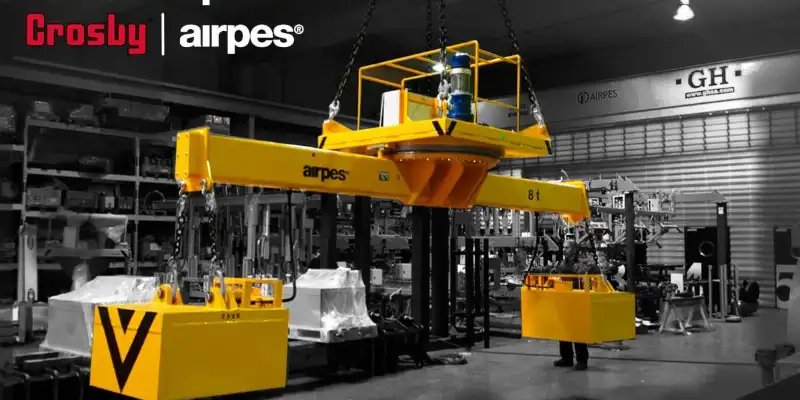
Overhead of the bridge crane being adjusted in our facilities
In the event of having to deal with loads of different shapes and/or with the center of gravity off-center of the object, an extendible or adjustable lifting beam can be designed to compensate for the irregular shape and weight of the object.
C-Hooks
C-hooks are used to lift and move sheet metal coils or industrial paper coils within a factory or plant.
Lifting Tongs
Various types of lifting tongs can be installed on an overhead crane to lift objects of all kinds, such as coil lifting tongs, scissor lifting tongs or rock lifting tongs. Lifting tongs are one of the most demanded lifting applications in our portfolio.
Vacuum lifters
A vacuum lifter is a device that lifts and moves an object by means of suction with hydraulic suction cups. This system is perfect for materials made of large plates and light weight, such as thin metal plates, wooden boardsor glass plates.
Rotators
A rotator lifting beam is nothing more than a lifting beam engineered and designed to lift a load into the air and then rotate it to another position relative to the ground.
Electromagnets
Electromagnets are a type of solution designed to lift metal objects of moderate weight, such as sheet metal or wire mesh.
Weighing hooks
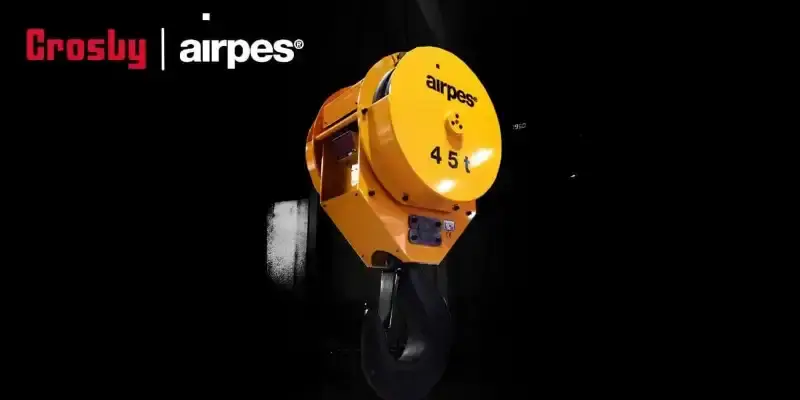
One of the esential overhead crane parts for many kinds of industries
A weighing hook is a type of equipment that allows an object or material to be lifted while indicating its weight.
Security systems you can find on a overhead crane
Modern overhead cranes have multitude of components designed to improve security and control of the machinery.
Electronic Limiters
Electronic limiters monitor and record data concerning the various lifting and weighing systems. They gather information from different elements of the elevation process.
Remote control systems
Remote crane monitoring and control is an advanced technology that allows you to remotely monitor and control the performance and status of your company’s or plant’s cranes. This innovative solution leverages automation, uses sensors, communication systems, and rope mechanisms to collect real-time data, providing detailed information on crane performance without the need for physical inspection./vc_column_text]
We design the crane you need (or improve the components of one you already have)
Crosby Airpes specializes in lifting systems at all levels. We can design the crane or rigging system you need for your crane, as well as upgrade and modernize an installation you already have in place in your company.
Crane modernization: upgrade the components of your lifting equipment
Crane modernization can be a strategy to optimize and modernize the performance and efficiency of old lifting equipment. Through improvements and upgrades at the rigging or system level, it is possible to maximize its load capacity, optimize its operation and extend its service life.
Some of the common improvements include
- the installation of more advanced control systems, which allow for more precise and safer crane operation
- additional safety devices, such as overload detection systems and motion limiters can also be implemented, ensuring greater protection for both operators and the load
- the upgrade of key components, such as hoists, electric chain hoists, girders and rigging, which can offer increased load capacity and faster lifting speeds
- replacing obsolete power systems with more efficient solutions can reduce energy consumption and operating costs
Crane modernization can also involve structural improvements, such as repairing or replacing overused parts, reinforcing the structure to support higher load capacity, or even implementing communication and remote control technologies to facilitate operation and monitoring from a centralized location.
Lifting equipment consulting available
When it comes to lifting equipment, having the right advice, inspections and controls can make all the difference. Crosby Airpes lifting equipment consulting offers a equipment expertise service to help companies make informed decisions and optimize their specific load handling operations. Ask us in our contact page to learn more about our tailored solutions.
Which type of installation is right for me?
Which system offers the least wear and tear and the longest life?
Which systems to install for use in different scenarios?
Our expertise service customer team will assess your specific needs and provide you with custom cranes or customized recommendations to maximize the efficiency and safety of your lifting equipment and cranes.
Whether it’s upgrading your existing cranes, adding new equipment or components or improving your maintenance practices, our consulting will guide you every step of the way:
- Lifting needs assessment: We analyze your requirements and advise you on the most suitable lifting equipment for your industry and specific applications.
- Lifting system design: We work with you to design customized solutions that optimize the performance of your cranes and lifting equipment.
- Safety improvement: We identify areas for improvement in your safety practices and provide recommendations to ensure a safe working environment while cranes are in operation.
- Performance optimization: We make inspections of your current operations and provide strategies to maximize the productivity and efficiency of your lifting equipment.
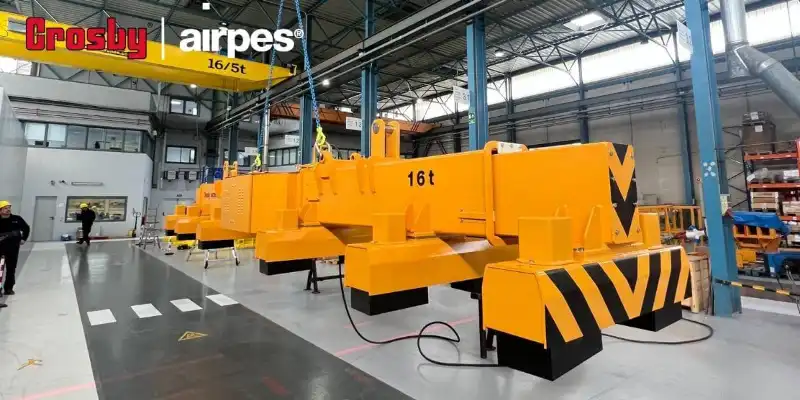
Airpes’ team manufacturing components for overhead bridge cranes
Our industry knowledge and experience allow us to offer effective solutions tailored to your specific needs, such as parts of a bridge crane. Our consulting service is also complemented with the service of Certification of lifting equipment and the possibility of testing cranes on a test bench.
We are your overhead crane component supplier
As you can see, although to the untrained eye it may seem that this is simple gear, behind a lifting equipment that works well even after tens of thousands of hours of accumulated work there is a very important previous work.
Did you know the different parts of a crane and everything you can do with it? Crosby Airpes can help you with any part of your crane.
If you have any questions, we are at your disposal.
In which industries are overhead cranes used? Examples
Overhead cranes are used in a wide range of industries where heavy lifting and efficient material handling are required. . Proper training and the use of radio controls are essential to ensure safe and efficient use in various sectors, such as:
- Manufacturing: to move materials and products within factories.
- Construction: on construction sites for lifting building materials.
- Automotive industry: for assembling parts and transporting heavy products.
- Logistics and warehouses: to handle loads in distribution centers.
- Steel and mining industries: to transport minerals, metals, and heavy materials.
What safety features are typically included in crane components?
Crane components often include several safety features to ensure safe operations, such as:
- Load limiters: prevent overloading that could damage equipment or cause accidents.
- Emergency stop systems: allow quick shutdown of crane operations in risky situations.
- Speed and stability controls: ensure smooth and controlled movement of loads.
- Load monitoring systems: to check that weight does not exceed safe limits during operation.
- Sensors and alarms: detect unusual or hazardous movements.
How often should crane components be inspected?
Crane components, especially those that are mounted, should be inspected regularly to ensure their proper functioning and safety. It is generally recommended to perform a visual inspection daily before each use, detailed monthly inspections, and comprehensive annual reviews by a qualified technician.
How do environmental factors affect crane components?
Factors such as humidity, dust, extreme heat, or exposure to corrosive substances can negatively impact the durability and performance of crane components. For instance, corrosion can weaken materials, while dust can damage mechanical and electrical systems. Regular maintenance is essential, and specific components designed for harsh environments may be required.
How do I know when it's time to replace crane components?
Crane components should be replaced when:
- Signs of wear or damage are observed on even a single component.
- The crane’s performance significantly decreases.
- Periodic inspections identify issues with critical parts.
- The equipment no longer complies with current safety regulations. Regular inspections and maintenance records help determine the right time to replace components.
- Implementing systems that enable predictive maintenance can help identify potential issues early, allowing you to replace components before they fail, ensuring optimal performance and safety. Regular inspections and maintenance records also play a crucial role in determining the right time for replacements.
Are Airpes components compatible with other crane brands?
Yes, Airpes components are designed to be compatible with a wide range of crane systems, making integration and optimization easy.
Can Airpes systems be customized to meet client needs?
Yes, in Airpes we can customize our systems to meet specific client needs. We specialize in designing and manufacturing bridge crane components tailored to various industrial applications, ensuring optimal performance and safety. Our expertise allows us to adapt our products to the unique requirements of each project.

